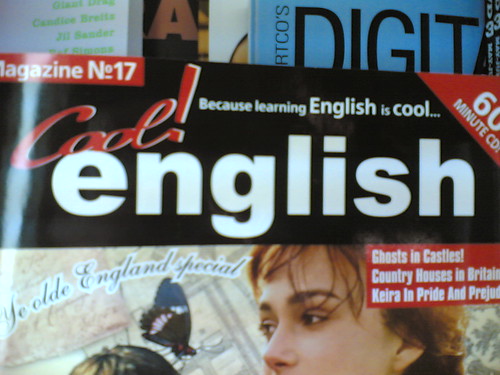ใน
Section 1 ของ part Reading
เราจะได้อ่านบทความในหัวข้อทั่วไป ความยาวประมาณ 900 คำ
และมีคำถามรวม 13 ข้อ ซึ่งเป็นคำถาม 3 แบบ
คำถาม 6 แบบที่ออกใน Section 1 บ่อยๆ คือ
- Sentence Completion
- Short Answer Question
- Note / Table / Flow Chart Completion
- Labeling a Diagram
- True / False / Not Given
- Global Multiple Choice
เราจะได้รู้จัก
เทคนิคในการรับมือกับคำถามแต่ละแบบกันเลยครับ
SENTENCE COMPLETION
= เติม คำหรือตัวเลข ในประโยค
- ดูที่
ช่องว่าง* แล้วเดาว่ามันน่าจะเป็น
ข้อมูลชนิดไหน เช่น noun, verb, adjective หรือ ตัวเลข
-
adjective มัก นำหน้า noun หรือ ตามหลัง verb to be เช่น is, am, are, was, were
เช่น
good analysis, This analysis is
good.
- การเติมคำต้อง
ถูกตามหลัก grammar
* ช่องว่างแต่ละช่อง จะบอกได้ 3 อย่าง
(1) ชนิดคำ (noun, verb, adjective) (2) ชนิดข้อมูล (3) เอกพจน์ หรือ พหูพจน์
Ex: The _______ in London has attracted the attention of tourists around the world.
(1) ชนิดคำ: noun (2) ชนิดข้อมูล: สถานที่ท่องเที่ยว (ดูจาก tourists) (3) เอกพจน์ (ดูจาก has)
SHORT ANSWER QUESTION
= เติมคำตอบแบบสั้น
- เริ่มจากคำถามข้อแรก
- วงกลม
Wh- word ในคำถาม เช่น what, where, when, why, who, whom, how
จะช่วยให้รู้สิ่งที่ถาม
Where? สถานที่
Which? สิ่งของ
When? เวลา
What? สิ่งของ
Why? สาเหตุ
Who? คน
How? วิธี
- วงกลม
keyword ในคำถาม
- กลับไปอ่านใน passage ว่าเจอคำที่คล้ายๆ
keyword หรือเปล่า
- ดูว่าคำถาม มันถาม
ข้อมูลชนิดไหน แล้วดูว่าต้องเติมอะไร
NOTE / TABLE / FLOWCHART COMPLETION
= เติมคำใน note / table / flowchart
- อ่านทั้ง note / table / flow chart ก่อน หนึ่งรอบ ให้ทุกคำผ่านตา
- ดูที่
หัวข้อเรื่อง (heading) และที่
คำที่ให้มา เพื่อจะรู้ว่ามันเกี่ยวกับเรื่องอะไร
- ถ้าเป็น flowchart ทำความเข้าใจว่า process มันดำเนินไปยังไง
-
วง keyword ที่อยู่ใกล้ๆ ช่องว่าง แล้ว
อ่าน passage หาคำที่ีมีความหมายเหมือน keyword
เพื่อ
ช่วยให้หาคำตอบได้ง่ายขึ้น
- ดูที่
ช่องว่าง แล้วเดาว่ามันน่าจะเป็น
ข้อมูลชนิดไหน เช่น noun, verb, adjective หรือ ตัวเลข
LABELING A DIAGRAM
= เติมชื่อสถานที่ในแผนที่ / แผนผัง
- อ่านทั้ง diagram ก่อน เพื่อรู้ว่ามันเกี่ยวกับอะไร
- อ่าน
คำที่ให้มาใน diagram
- ดูที่
ช่องว่าง แล้วเดาว่ามันน่าจะเป็น
ข้อมูลชนิดไหน เช่น ชื่อสถานที่ หรือ ขั้นตอน
- ตอนอ่าน สังเกต
คำที่บอกตำแหน่ง (ช่วยให้เราหาคำตอบได้ง่ายขึ้น) เช่น
in the middle, on the corner, next to, above/below, straight ahead, leads to
TRUE / FALSE / NOT GIVEN
= ดูว่า ประโยคที่ให้มา ถูก หรือ ผิด หรือ ไม่ถูกกล่าวถึง
| |
True |
ประโยคที่ให้มา มีความหมายคล้ายกับ ประโยคใน passage
(พูดสิ่งเดียวกัน แต่ใช้คำที่ต่างกัน) |
| |
False |
ประโยคที่ให้มา มีความหมายตรงข้ามกับ ประโยคใน passage |
| |
Not Given |
ประโยคที่ให้มา ไม่ถูกกล่าวถึง ใน passage |
- อ่านประโยคที่ให้มา
-
วง keyword ในประโยคที่ให้มา
-
หา keyword ใน passage
- อ่าน passage จาก บนลงล่าง ไม่ต้องกระโดดไปกระโดดมา
(เพราะคำถามเรียงตามลำดับใน passage)
- เมื่อเจอ keyword ให้
อ่าน 2 ประโยคหน้า + หลัง
- ตีความว่าความหมายตรงกับคำถาม หรือเปล่า
GLOBAL MULTIPLE CHOICE
= คำถามเกี่ยวกับ หัวข้อ (topic), ใจความสำคัญ (main idea), จุดประสงค์ (objectives) ของ passage
-
วง keyword ในคำถาม และตัวเลือกทั้ง 4 ข้อ
- อ่าน
ประโยคที่เป็น
ใจความสำคัญใน
แต่ละย่อหน้าของ passage
(มักเป็นประโยคแรก หรือประโยคสุดท้าย)
-
ตัดตัวเลือกที่ผิดแน่ๆออก แล้วดูว่าตัวเลือกไหนน่าจะถูก
ลองเอาไปใช้กันดูนะครับ คะแนนต้องมีการพัฒนาแน่นอน
แล้วเพื่อนๆ มีเทคนิคในการรับมือคำถามพวกนี้ยังไงบ้างครับ
 คำถามหมวด Visitors จะถามเกี่ยวกับ
คำถามหมวด Visitors จะถามเกี่ยวกับ



![MPj04393930000[1]](http://farm3.staticflickr.com/2609/5843577632_d146208a9c.jpg)





